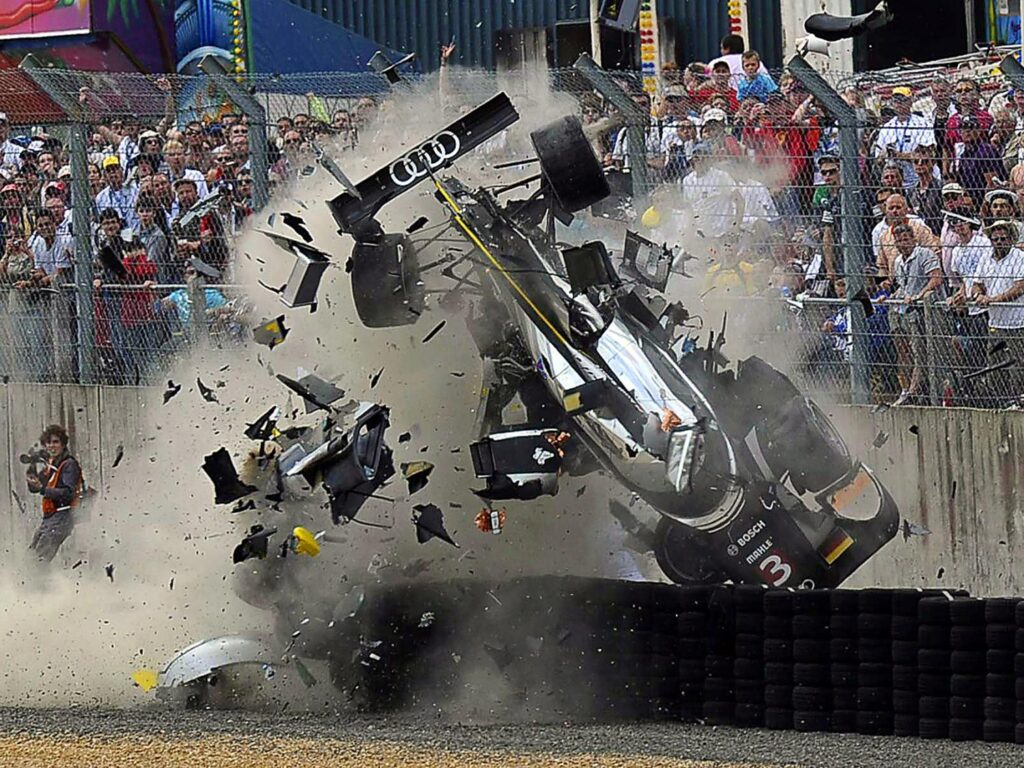As a motor racing fan, a technologist and engineer, I am fascinated when watching large scale motor racing at the amount of real-time telematics data streamed from the cars on the track back to their respective teams. With hundreds of sensors, the technical pit crew can analyse an enormous number of features of the vehicle’s operation.
We might be able to monitor gear box temperature or tyre pressure at any moment in time, however, less attention is paid to the state of the driver.

Le Mans
While watching the Le Mans 24-hour endurance race the other weekend, I was struck with how sophisticated the cars had become. The phrase “bristling with technology” came to mind.
Last year’s winner with a name suitable for a science fiction movie, the Audi R18 e-tron quattro had laser headlights. This year’s winner, the Porsche 919 supplemented its prodigious power with a hybrid system with batteries charged by a turbine that was spun by passing exhaust gasses.
With all this technology you wonder how much longer it will be before we turn our focus back to what would have to be the weakest link – the driver.
While drivers of these cars certainly train for the event and keep their bodies at peak fitness, there is less real-time monitoring of this critical link in the chain than you may think. During the Le Mans race commentary, driver fatigue was mentioned numerous times, yet when it was mentioned, it was almost as conversation filler – rapidly replaced by talk of tyre and fuel when the cars came in for a pit stop.
This gave me pause for thought: when tyres are degraded to a certain point, the car comes into the pits and the tyres are replaced. When fuel is low, again the car is pitted.
Teams do try and manage their strategy so these two items can be done concurrently, and in the case of the Le Mans race it is at one of these pit stops that the driver is changed. Interestingly, the driver is not changed because he is ‘worn out’. But perhaps he should be? Pit stops shouldn’t only be based on vehicle statistics but driver data as well. Technology today allows for instantaneous and continuous measurement of a driver’s fatigue level, so it is possible.
Are these drivers pushing themselves beyond the limit?
Elite sports people constantly push their bodies to the limit and motorsports, particularly endurance races, encourage this behaviour.
As a consequence, hundreds of drivers have died over the years competing in motorsports. Le Mans itself has a chequered past when it comes to safety. Twenty-five drivers have died competing in the gruelling 24-hour event but most notably was the horrific accident which occurred during the 1955 race. During this event, an accident between drivers caused large fragments of racing car debris to fly into the crowd. One driver and 83 spectators died at the scene with 120 more injured. This remains the worst accident in motorsport history. But the tragedy did have some positive outcomes.
After an initial ban on motorsports in France Spain and Switzerland, track design safety standards were increased, and to this day, the barriers for many motor racing events are far higher and wider to improve spectator safety. But, teams will continue pushing the boundaries of technology and searching for any competitive edge. It is therefore inevitable the state of the driver will come more into play and not just track and vehicle design.
Next year’s Le Mans could easily see driver changes happen when the alertness level of a driver drops below a certain score. After all, when the difference between success and failure is dependent on decisions made in fractions of a second, and the stakes are so high, it would seem to me the biggest gain would come from the having the most alert driver on the track.


